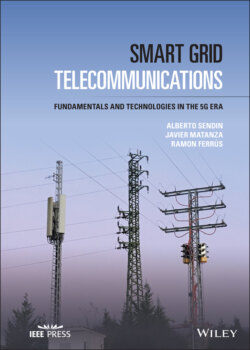Читать книгу Smart Grid Telecommunications - Ramon Ferrús - Страница 37
1.5.1.2 Customers as Energy Generators
ОглавлениеCustomers have now a set of technologies (DER [39]) that allow them to participate as an agent that has the possibility of producing part of the energy they need, and even help the grid, making any excess of generation available for the system.
There are multiple DER elements, including DG but also Energy Storage (ES), and not forgetting Electric Vehicles (EVs), that play a role for the system (positive, as “batteries on wheels”; challenging, as “moving loads”) further than their direct environmental impact (reduction in fossil energy sources consumption).
DG includes wind power, solar power, geothermal power, biomass, and fuel cells. They can be manageable or unmanageable from the grid perspective, depending on several factors such as their installed capacity, the availability of the energy they produce, and the connectivity and intelligence of their ancillary elements for grid integration. Notwithstanding, when these elements are available and connected at end‐user premises of small producers and communities, the consumer has the dual role of consumer and producer (i.e., a prosumer). However, the overall traditional concept of the energy power system protection and control needs to adapt to this new reality.
EVs, on their side, have a very interesting role to play. EVs contribute to the overall energy waste reduction, system efficiency, and fossil fuels and emission reduction and are seen as moving batteries to help the system. This can be done by means of the storage of certain types of energy produced at times where the consumption cannot take advantage of them [40] and be used to charge EVs and have it delivered when and where it is needed.
